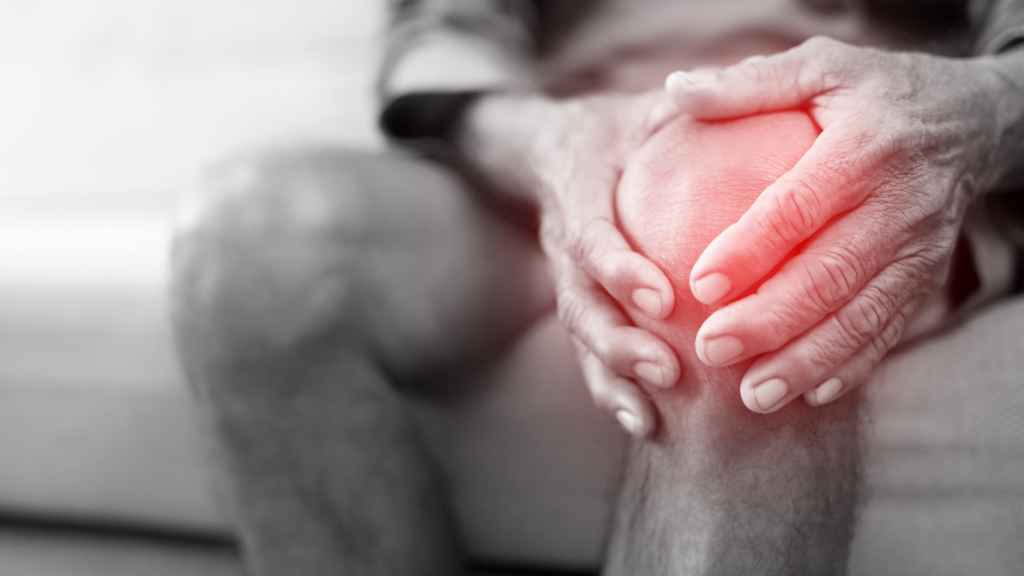As a physiotherapist, my daily interactions with patients reveal the significant impact of osteoarthritis (OA) on knee joints. In this comprehensive guide, we’ll explore what osteoarthritis is, its prevalence, symptoms, effective management strategies, and the inclusion of home exercises, along with insights into rehabilitation programs like GLA:D and PEAK.

What is Osteoarthritis?
Osteoarthritis is a degenerative joint disease characterised by the gradual changes to the cartilage of the knee. The cartilage is probably best known for it’s cushioning within the knee joint. Osteoarthritis can impact on several joints however it most commonly affects weight-bearing joints like the knees, leading to pain, stiffness, and reduced mobility.
How Common is Osteoarthritis?
With over 250 million people worldwide affected, osteoarthritis stands as a prevalent joint disorder, especially among the aging population. Factors like genetics, joint injuries, obesity, and repetitive stress contribute to its development.
Symptoms of Osteoarthritis
Recognising symptoms is pivotal for early intervention. Individuals with osteoarthritis often experience persistent joint pain, stiffness, swelling, and a limited range of motion in the affected knee.
How to Manage Osteoarthritis
Effective management involves a multifaceted approach:
- Exercise: Engage in regular, low-impact exercises such as swimming, walking, or cycling to strengthen muscles and reduce joint stress.
- Weight Management: Maintain a healthy weight to alleviate symptoms and prevent further joint degeneration.
- Physical Therapy: Work with a physiotherapist for therapeutic exercises and manual therapy.
- Medication: Over-the-counter anti-inflammatories might be beneficial and should be used under professional guidance.
At-Home Exercises for Osteoarthritis
Empowering individuals to manage osteoarthritis independently is crucial. Here are some effective at-home exercises:
- Bridges
- Lie on your back with both knees bent to about 90 degrees.
- Lift your hips up off the ground, pushing down through both feet
- Gradually lower your hips back down.
- Complete 15 of these in a row.
- Straight Leg Raises:
- Lie on your back, one leg bent, and the other straight.
- Lift the straight leg a few inches off the ground, hold briefly, and lower it slowly.
- Calf Raises:
- Stand with feet hip-width apart, holding onto a chair for support.
- Lift your heels off the ground, rising onto your toes, and then lower them back down.
Rehabilitation Programs: GLA:D® and PEAK
In addition to home exercises, specialised programs like GLA:D (Good Life with osteoArthritis in Denmark) and PEAK (Physiotherapy Exercise and physical Activity for Knee osteoarthritis) offer structured approaches to managing osteoarthritis:
- GLA:D:
- Combines education, exercises, and neuromuscular training.
- Empowers individuals with a twelve-session program for both group and individual sessions. This includes 2x60minute exercise sessions per week for 6 weeks.
- Is completed in person.
- PEAK:
- Comprehensive exercise program incorporating aerobic, strength, flexibility and impact exercises.
- Adaptable to varying fitness levels, ensuring inclusivity.
- Consists of 5 individual sessions over 10 weeks.
- Can be completed in person or online
Osteoarthritis of the knee presents challenges, but with knowledge and proactive management, individuals can lead active lives. Incorporating at-home exercises, in conjunction with rehabilitation programs like GLA:D and PEAK, provides a holistic approach to managing symptoms and improving overall joint health. By fostering self-efficacy and collaboration between healthcare professionals and patients, we pave the way for a more empowered and fulfilling journey for those navigating knee osteoarthritis.